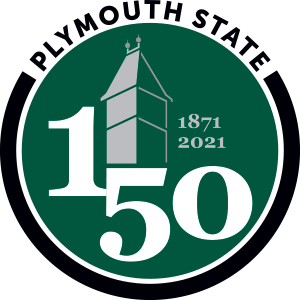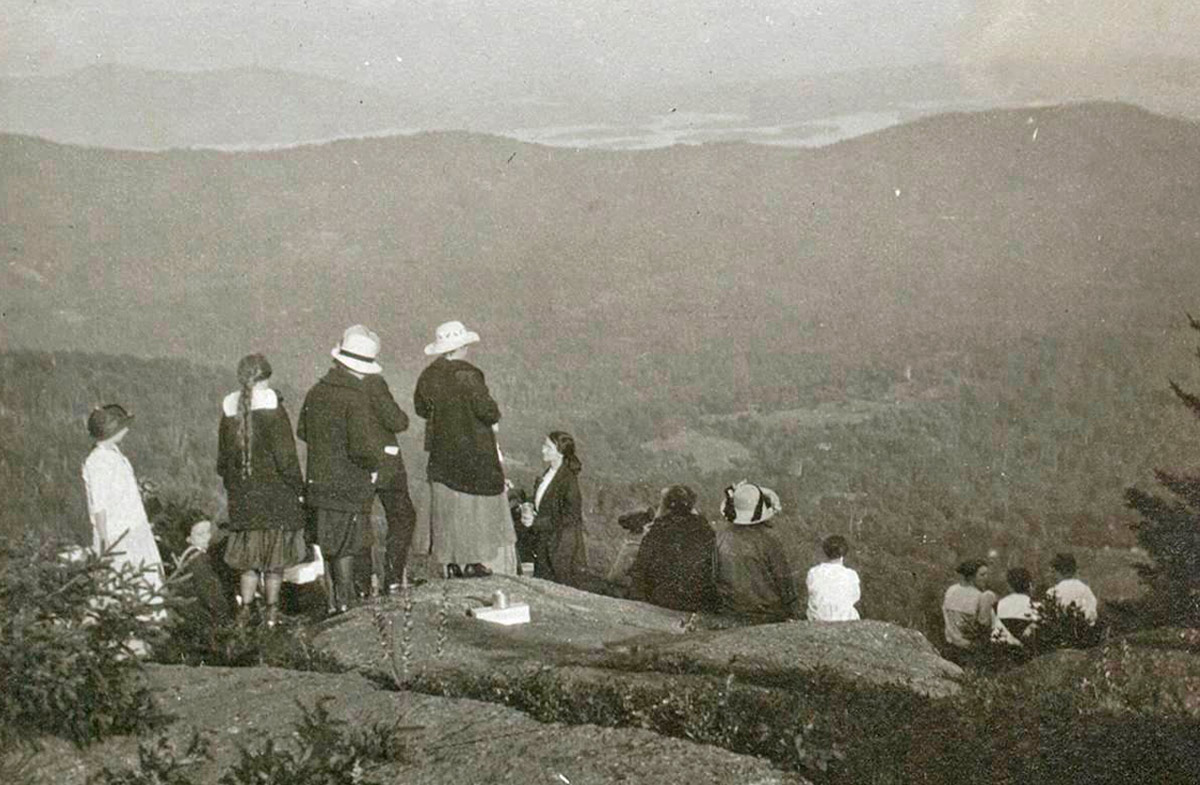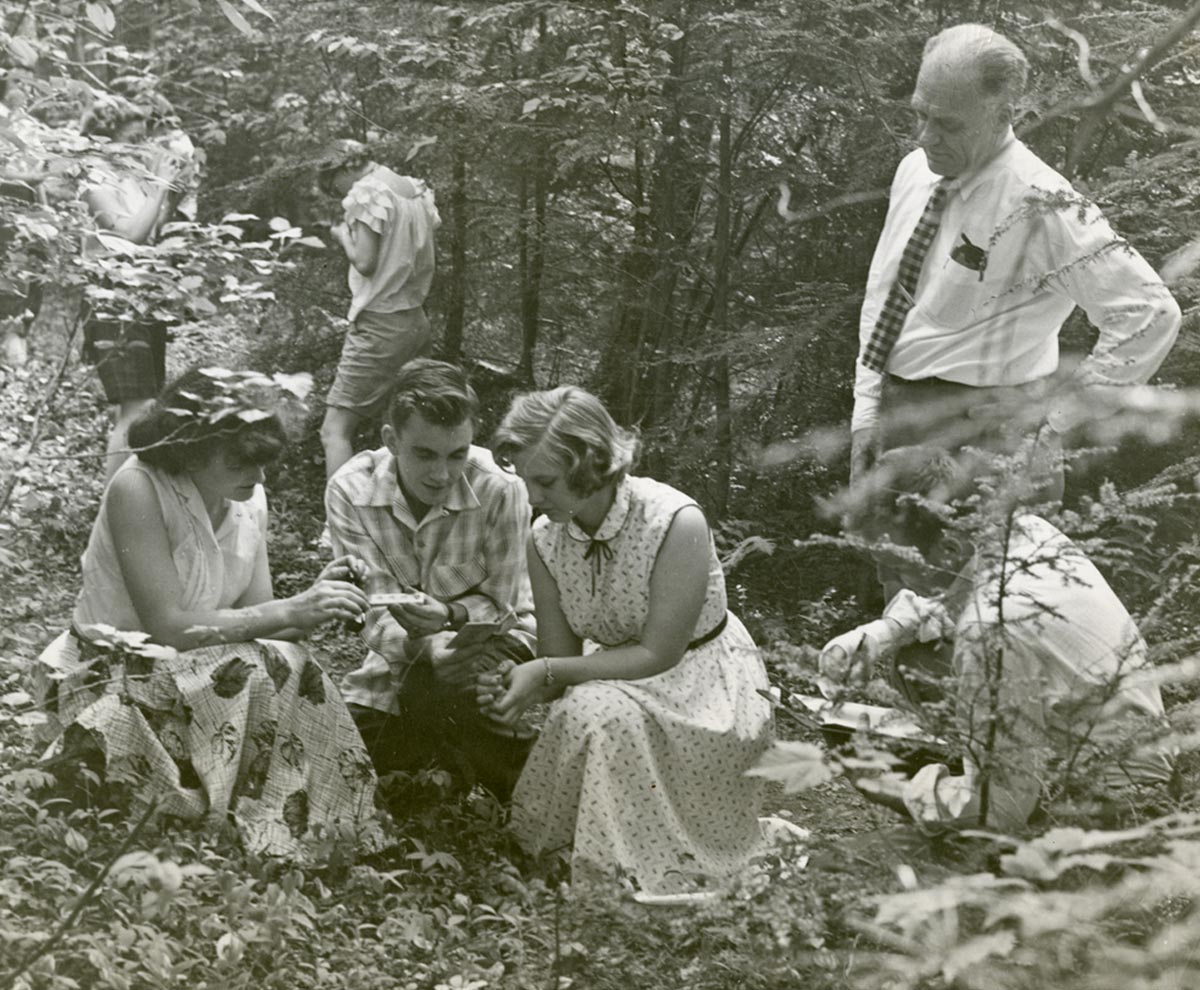 Looking Back: A History of Engagement, Service, and Community
Looking Back: A History of Engagement, Service, and CommunityNew Hampshire’s legislature took action in 1870 to address a desperate need for trained educators. The “act for the establishment and management of a state normal school for the better training of teachers” appropriated a small amount of money for the new institution but left the details of establishing the school to trustees.
Many towns submitted proposals, but Plymouth’s was community wide. The town purchased and offered the old Holmes Plymouth Academy buildings and pledged $7,000; Plymouth citizens raised $1,100. The railroad promised $4,000 if Plymouth was chosen. The local school district promised $600/year for tuition to teach town students. All told, the town offered some $42,000 in real estate and cash. After reviewing a competitive set of proposals, the trustees chose Plymouth. The town had a history of support for higher education, buildings for the school already existed, Plymouth was a tourist destination and travel to town was increasingly easy, and the school had clear citizen support.
Plymouth Normal School (PNS) opened on March 15, 1871, using a state-of-the-art model to prove to state leaders the necessity of training teachers. Students learned to teach by instructing elementary students in a “model” school, a hands-on experience overseen by their instructors. Thus began a tradition of experiential education and innovation.
PNS took the lead in implementing progressive educational reforms in the Northeast. For example, outdoor education was developed in the region much earlier than in other areas. Students took nature walks, worked in school gardens, and mastered the scientific method. Through graduates of the Normal School, schoolchildren around the state also used the outdoors as a laboratory. Similarly, PNS introduced physical education in 1902 and, by 1906, the Women’s Basketball Team represented PNS in intercollegiate competition. The 1916 catalog notes that “…serious life demands its recreations and variety… One hour a week is required of all for physical training.” Students took part in mountain climbing, basketball, hiking, snowshoeing, croquet, tennis, and archery. By 1928, skating, skiing, tobogganing, baseball, soccer, and “bowling on the green” were added. While wellness science was in its infancy, PNS faculty already recognized the connection between mind and body.

Faculty expanded hands-on learning opportunities. Students used Langdon Park for nature study, gardened on campus and in the school’s greenhouses, taught local schoolchildren in the Model School, and hiked to Loon Lake. On September 21, 1911, student Carrie Frost wrote home. “Mr. Langdon’s kindness has made corn-roast and ‘Tree Days’ in Langdon Park unforgettable red-letter days in the memories of ‘Normal Girls.’ And those campfires on Baker River sands! Words fail!”
In 1911, with a student body of 120 students, Ernest L. Silver became principal. A fiscally responsible, stern disciplinarian, Silver remained until retiring in 1946. Silver knew Robert Frost and hired him. Frost’s family shared a house with Silver and the four young Frost children attended the Model School while their father taught psychology and education. Frost later thanked Silver for teaching him “how to teach,” though it proved a distraction to his poetry. He left for England after only a year at Plymouth. He remained tied to the school, however, returning to give poetry readings in later years.
Academic offerings reflected the changing needs of the state and students. In 1915, PNS required students to have high school diplomas for entrance and, the next year, lengthened the curriculum to three years for junior high school teachers. In 1918, the school began to offer a commercial curriculum for teaching secondary school business. Between 1921 and 1923, PNS revised the curricula of secondary teachers in history and the social sciences to emphasize content over methods. A growing number of men joined the women as students and as teachers in the state in the 1920s. In 1929, Plymouth awarded its first baccalaureate degrees, bachelor’s of education in history or commerce. In 1933, all secondary teaching curriculum were lengthened to four years, as was elementary training in 1939. Before the Depression hit, enrollment increased to 335 students, reflecting wider recognition of Plymouth’s growing reputation in engaged research and teacher training.

All PNS students graduated with a four-year degree after 1939, making the institution a college in all but name. The legislature recognized that and renamed the institution Plymouth Teachers College (PTC) in 1939. PTC adopted and embraced a new motto: Ut prosim (That I may serve).
Service to the community expanded the same year when the town consolidated its school districts into a new central elementary school, named for Guy E. Speare, a former PTC professor of education who trained and supervised student teachers for many years. The building later served as classroom, gymnasium, and theatre space for the College and town schoolchildren. When Speare Hall proved too small due to the postwar baby boom, the old Model School was renovated in 1950 to provide additional classroom space and renamed Memorial Hall to honor veterans. PTC faculty and students taught local students in both locations.
In 1945, Plymouth Teachers College began to offer vocational courses in business fields for veterans whose schooling had been interrupted. The 1946 Conning Tower noted that “…these veterans have been welcomed as members of the student body and are a valued part of the P.T.C. social life.”
The Cold War caused more people to seek college degrees and the student population rebounded from the trials of the 1930s and 1940s to reach 860 students in 1962. The school expanded its service mission with enrichment programs that helped practicing teachers improve their teaching methods and deepen content knowledge. In 1948, the New Hampshire Board of Education granted PTC authority to offer full-year graduate programs in elementary teaching, school administration, and counseling; the first graduate students received their diplomas in 1951. The College divided into nine undergraduate academic departments in 1959, emphasizing math, sciences, and foreign languages.
Plymouth State College: 1963–2003
On July 1, 1963, the legislature renamed the institution Plymouth State College (PSC) and new bachelor of arts degrees were added, with concentrations in history, English, music, biology, and math. In 1964, the College offered business administration and secretarial science degrees as well.
Plymouth used innovative teaching methods, as it had done since 1871. In the early 1960s, professors used television to teach languages, taught “new math,” and led art workshops. In 1965, Plymouth began offering noncredit Adult Education courses, which morphed into popular Continuing Education programs. The College established the Honors Program in 1968 to encourage student academic excellence. Amid the cultural upheaval of the sixties and early seventies, PSC unveiled new buildings and programs while remaining focused on academic excellence and service.
As the College’s mission broadened, PSC added a master of business administration degree in 1974. Like the master of education, it serves the practicing professional and provides a balance between theoretical knowledge and its application. Plymouth State collaborated with the New Hampshire Department of Education to bring more graduate programming to the underserved parts of the state. Increased high-quality advanced educational programs have led to more community and state outreach and increased collaboration.
Fraternities came to campus in 1963 and sororities reappeared in 1968. In their heyday, the ten campus Greek organizations dominated the social scene. They provided service to the College and community by fundraising for Easter Seals and other charities, and assisting at Homecoming (which began in 1967), banquets, concerts, and other events.
Plymouth State College created new programs, involved regional community partners, and expanded engagement in learning as students arrived from across the region. In 2002, there were 3,514 undergraduate attendees, almost evenly split between women and men. With so many excellent programs, increased graduate program offerings, and an intensified focus to provide the northern half of the state with needed service, Plymouth State had outgrown the name “College.”
Plymouth State University: 2003–present
Building on the tradition begun in 1871, a Plymouth education excels in practical experiences, innovative educational initiatives, research opportunities, sustainable living, and external partnerships. Plymouth State University is the hub of an ever-growing creative community where students, faculty, staff, and alumni are actively transforming themselves and the region. The laboratory for learning first contemplated in the nineteenth century has grown while maintaining the academic excellence and close faculty-student relationships that remain enduring hallmarks. ■ Marcia Schmidt Blaine and Louise Samaha McCormack ’72